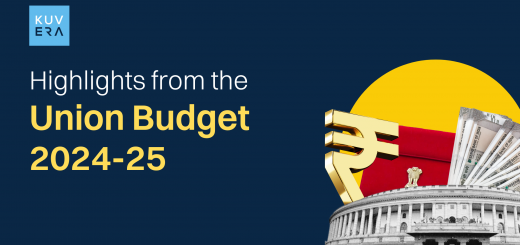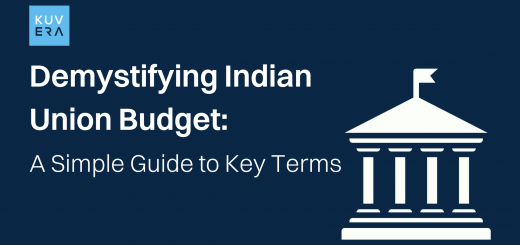The Economic Survey 2023-24 was tabled by Finance Minister Nirmala Sitharaman on 22 July 2024, a day before the Union Budget 2024. It provides a detailed analysis of the economy’s performance last year, the challenges faced, and the future prospects for India.
What Is The Economic Survey?
The Economic Survey acts as a report card for the economy. It details how the economy has been performing, the problems it might be facing, and the government’s plans to address these issues. Released annually before the Union Budget, this year’s Economic Survey was presented on 22 July 2024 by India’s Chief Economic Adviser (CEA) V. Anantha Nageswaran and tabled in Parliament by Finance Minister Nirmala Sitharaman.
Start investing in Index Funds.
Key Highlights From India’s Economic Survey 2024
Economic Resilience Amid Global Challenges
India’s Chief Economic Adviser emphasised the challenging global environment in the Economic Survey 2024, noting that despite these difficulties, India’s economy remains resilient. The real GDP grew by 8.2% in FY24, marking the third consecutive year of over 7% growth, driven by stable consumption demand and steadily improving investment demand. The Survey projects a conservative real GDP growth of 6.5-7% for FY25, aligning with the International Monetary Fund’s estimate but slightly below the Reserve Bank of India’s forecast of 7.2%.
Inflation and Fiscal Health
Headline inflation is largely under control, with retail inflation decreasing to 5.4% in FY24 from 6.7% in FY23. The RBI projects inflation to fall to 4.5% in FY25 and 4.1% in FY26, assuming normal monsoon conditions and no external shocks. Core inflation, which excludes food and energy prices, was 3.1% in June compared to 7.1% in February 2022. The fiscal deficit is expected to drop to 4.5% of GDP or lower by FY26.
Capex And Fiscal Deficit
India’s fiscal deficit is expected to decrease to 4.5% or lower by FY26. Government efforts on capital expenditure (capex) and private investment have increased capital formation growth. Gross Fixed Capital Formation (GFCF) rose by 9% in FY 2023-24. The Current Account Deficit (CAD) was at 0.7% of GDP in FY24, down from 2% in FY23.
Job Creation Imperatives
The survey states that one out of two Indian students, straight out of college, are not skilled enough to be employed. The Indian economy needs to generate nearly 7.85 million non-farm jobs annually to cater to the rising workforce until 2030. The unemployment rate declined to 3.2% in FY23, reflecting improvements in the labour market over the past six years. Female labour force participation has also been on the rise, contributing to the overall employment landscape.
Growth Strategy For Amrit Kaal
The government’s growth strategy for the Amrit Kaal focuses on six critical areas:
- Boosting Private Investment
- Expanding MSMEs
- Agriculture as a Growth Engine
- Green Transition Financing
- Bridging the Education-Employment Gap
- Building State Capacity
Capital Markets And Private Sector
Indian capital markets continue to play a crucial role in the country’s growth, showing resilience despite geopolitical risks and volatile commodity prices. The Survey highlighted the importance of private sector finance for quality infrastructure development and noted that healthier corporate and bank balance sheets would strengthen private investment.
AI And The Future Of Work
Artificial Intelligence (AI) is set to reshape the future of work, bringing both opportunities and uncertainties. The Survey emphasised the need for India’s IT and non-IT sectors to balance technology deployment and labour to ensure that AI adoption does not adversely impact employment and income distribution.
Agricultural Sector And Public Health
The agriculture sector has shown an average annual growth rate of 4.18% over the past five years but faces challenges such as extreme weather events impacting farm output and food prices, leading to food inflation rising to 7.5% in FY24. The Survey called for a re-orientation of farm policies and emphasised the need for well-distributed rainfall to improve crop yields. Additionally, it noted that 54% of India’s disease burden is due to unhealthy diets, highlighting the importance of transitioning towards a balanced, diverse diet.
PLI Schemes And Industrial Growth
The Production-Linked Incentive (PLI) schemes have attracted proposed investments of ₹67,690 crore in the automobile and auto components sector, with ₹14,043 crore invested by March 2024, generating 28,884 jobs. These schemes are gaining traction in critical sectors like electronics and pharmaceuticals, with total investments surpassing ₹1.28 lakh crore. The Survey also noted a significant increase in domestic production and exports of electronic items.
Telecom Sector And Digital Economy
The Economic Survey acknowledged the government’s efforts in the telecom sector, with significant improvements in mobile broadband speed and overall teledensity. India’s international rank in mobile broadband speed improved from 118th to 15th in March 2024. The government has allocated 5% of annual collections from the Universal Services Obligation Fund for telecom R&D to support further development in this sector. By the end of March 2024, there were 1.165 billion wireless telephone connections, and 683,175 kilometres of Optical Fibre Cable (OFC) had been laid, connecting 206,709 gram panchayats.
International Trade And Investments
India needs to strike a balance between importing goods and capital from China to limit the widening trade deficit. The Survey suggested that promoting foreign direct investment (FDI) from China could boost India’s exports to the US, following the example of East Asian economies. It also highlighted the need for pragmatism in policy-making, avoiding doctrinal or ideological orientations.
Remittances
Remittances to India are projected to grow by 3.7% to $124 billion in 2024 and by 4% to $129 billion in 2025. This steady growth underscores the significant contribution of the Indian diaspora to the country’s economy.
Public Investment And Corporate Responsibility
The Survey emphasised the need for corporations to step up hiring and increase worker compensation to sustain demand and economic growth. Despite significant corporate profit growth, hiring and compensation have not kept pace, indicating a gap that needs to be addressed.
FAQs about India’s Economic Survey
Who Prepares the Economic Survey and When Is It Released?
The Economic Survey is prepared by the Economics Division of the Department of Economic Affairs under the Chief Economic Adviser (CEA). This year, it was released by CEA V. Anantha Nageswaran and his team and tabled in Parliament by Finance Minister Nirmala Sitharaman on 22 July 2024.
Why is the Economic Survey Significant?
The Economic Survey is significant for several reasons:
1. Policy Formulation: It serves as a foundation for policy formulation by providing a comprehensive overview of the country’s economic performance, challenges, and opportunities.
2. Growth Projections: The Survey presents growth projections and forecasts, helping to understand the economy’s trajectory.
3. Indicator of Economic Health: It acts as an indicator of the country’s economic health, highlighting areas of strength and weakness, and offers insights into ongoing economic trends.
4. Global Context: It contextualises the country’s economic performance within the global space, considering international developments impacting the domestic economy.
5. Investment and Business Decisions: For businesses and investors, the Survey serves as a critical source of information for making investment and business decisions based on the overall economic outlook.
How Does the Economic Survey Serve the Citizens?
The Economic Survey serves the citizens by assessing key areas such as GDP growth, inflation, sectoral trends, and global economic influences.
What Does the Economic Survey Document Show?
The Economic Survey evaluates the nation’s economic performance, examines the execution of policies, and highlights the achievements and shortcomings of significant development programmes. It also makes projections for the next fiscal year. The document is divided into two sections:
Part A: An outline of India’s economic developments and challenges.
Part B: Examines specific topics for the previous fiscal year, such as social security, poverty, healthcare, education, human development, and the environment.
How Is the Economic Survey Different from the Budget?
The Economic Survey is an annual report that analyses the country’s economic performance and provides policy recommendations, while the Union Budget is the government’s financial statement outlining its revenue and expenditure plans for the upcoming fiscal year. The key difference is that the Economic Survey is an analytical document, while the Budget is a financial plan of action.
Interested in how we think about the markets?
Read more: Zen And The Art Of Investing
Watch here: Investing in Focused Mutual Funds
Start investing through a platform that brings goal planning and investing to your fingertips. Visit kuvera.in to discover Direct Plans of Mutual Funds and Fixed Deposits and start investing today.
AREVUK Advisory Services Pvt Ltd | SEBI Registration No. INA200005166
DISCLAIMER: Mutual Fund investments are subject to market risks. Read all scheme related documents carefully. Registration granted by SEBI, membership of BASL (in case of IAs) and certification from NISM in no way guarantee performance of the intermediary or provide any assurance of returns to investors. Investments in securities market are subject to market risks. Read all the related documents carefully before investing. The securities quoted are for illustration only and are not recommendatory.












